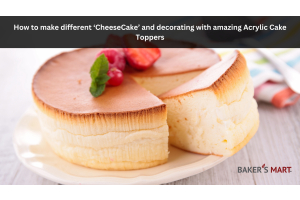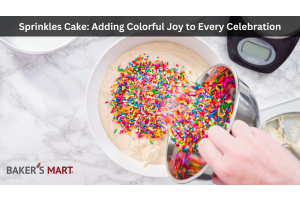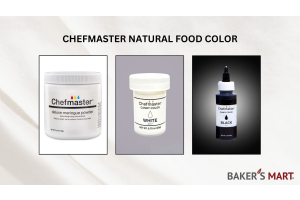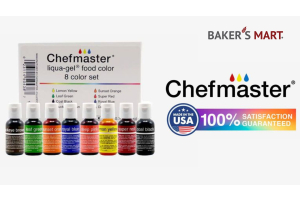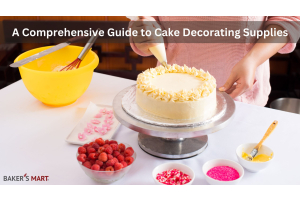Couverture Chocolate : A Detailed Synopsis

COUVERTURE CHOCOLATE: WHAT IS IT?
Couverture is the common name for high-quality chocolate. Couverture chocolate differs from regular chocolate in that it contains more cocoa butter – a greater proportion of cocoa butter compared to cocoa mass. When combined with correct tempering, the increased percentage of the cocoa butter provides the chocolate more gloss, a firmer "snap" when cracked, and a buttery mellow flavor.
MINIMUM REQUIREMENTS
It's not chocolate just because it's brown. Did you realize that the word 'chocolate' is a legally protected term? That is correct.
As the cost of cocoa ingredients soared in the 1990s and 2000s, the standard of bars of chocolate and treats quickly worsened. Some producers were removing the two essential elements that create chocolate — chocolate! — in order to generate a cheaper product. Cocoa butter and solids from cocoa beans were replaced with ingredients such as palm oil or vegetable oil, to the point that some chocolate products had no chocolate at all. Chocolate enthusiasts were unhappy because their favorite sweets tasted unusual and now had a waxy quality. Customers asked that something be done. That's when government officials stepped in.
The American Food and Drug Administration (FDA) and the Canadian Food Inspection Agency (CFIA) both implemented new labeling standards for chocolate goods to ensure that consumers knew whether they were purchasing a product containing real chocolate or not.
According to the new standards, an item termed "chocolate" cannot contain any vegetable fat other than cocoa butter — no coconut oil, palm oil, or vegetable oil. If it does, it cannot be labeled or referred to as real chocolate. This type of substance is known as a "compound," and the package must state "candy," "chocolate-flavored," or "chocolatey."
Couverture chocolate adheres to similar but significantly higher standards. According to European Union rules, couverture must contain at least 35% cocoa solids and no less than 31% cocoa butter in order to be designated "couverture." That's why authentic couverture chocolate is so decadent: more cocoa butter means greater chocolate flavor along with a creamier, finer mouth feel.
WHAT IS THE DIFFERENCE BETWEEN COCOA BUTTER AND NORMAL BUTTER?
Cocoa butter is manufactured from entire cocoa beans, whereas regular butter is produced from cow's milk. Cocoa butter has a chocolate flavor and scent and melts quickly at body temperature (and in the mouth). Cocoa butter provides chocolate with its silky creamy consistency and extra cocoa flavor, and it is the reason couverture tastes so good.
Because cocoa butter is the sole vegetable-based fat that stays solid at ambient temperature but fluid at body temperature, true chocolate actually melts in the mouth (and your oven).
WHY WOULD COUVERTURE COST MORE?
Because cocoa butter is one of the most costly components of chocolate, couverture chocolate is often priced higher than other forms of chocolate: it contains more cocoa butter.
Cocoa butter is a costly commodity used in a variety of businesses, not simply chocolate. It's such a potent component that it's easy to notice when chocolate lacks it: as opposed to feeling velvety on the tongue while melting in the mouth, it has an oily, squeakier, or grittier sensation.
HOW IS COUVERTURE CREATED?
As previously stated, cocoa butter is a fat that is extracted from entire cocoa beans. Cocoa nibs are made after fermenting and drying cocoa beans that have been roasted and shelled. Cocoa mass (also known as cocoa liquor, cocoa solids, or chocolate liquor) is made by finely grinding cocoa nibs (conching). Cocoa mass is made entirely of unsweetened chocolate.
There are two ways to proceed after making cocoa mass. One option is to add more cocoa butter into the chocolate mass (along with additional components such as sugar, milk powder, vanilla bean, and lecithin) and crush it again to get smooth couverture chocolate.
The second step is to make cocoa butter and cocoa powder. In order to distinguish the cocoa butter from its non-fat cocoa solids, the cocoa mass is compressed in massive hydraulic presses. The nonfat cocoa solids (called cocoa cake) are then pulverized further to produce acidic and bitter cocoa powder.
Cocoa powder comes in two varieties. The acid in Dutch process cocoa powder can be neutralized by an alkaline, making it easier to dissolve in liquids. Natural cocoa powder consists of just powdered cocoa solids without any added ingredients, and it has a richer, more powerful cocoa flavor. You'll be pleased to learn that cocoa powder contains 20% protein and is high in minerals and nutrients such as zinc, iron, and magnesium.
THE PROCESS OF COUVERTURE
High-quality chocolate (couverture) is manufactured differently, not only with better ingredients.
Couverture is a high-quality chocolate with additional cocoa butter. After fermenting, drying, roasting, shelling, and grinding cocoa beans into cocoa mass (cocoa liquor), more cocoa butter and other ingredients depending on the type of chocolate are added:
- Dark chocolate has the following ingredients: cocoa mass, cocoa butter, sugar, vanilla, and lecithin.
- Milk chocolate has the following ingredients: cocoa mass, cocoa butter, milk powder, sugar, vanilla, and lecithin.
- White chocolate has the following ingredients: sugar, milk powder, cocoa butter, vanilla, and lecithin.
The combination is ground (conched) once more to fine-tune the flavors and textures. The conching process influences the size of the cocoa particles in the produced chocolate in addition to the chemical composition of the chocolate, which subsequently influences the flavor of the completed product. Chocolate possesses an uneven and grainy texture before conching. The conching technique produces chocolate and sugar particles that are smaller than what the tongue can perceive, resulting in a smooth mouthfeel. The smoother (and costlier since it takes longer to create) the couverture is, the longer the conching.
The addition of cocoa butter makes couverture more silky and more costly. Because of the larger amount of fat, it must be handled differently; it must be tempered to enable it to work well. Couverture is similar to steel in that it undergoes heating and cooling till its internal structure is sturdy, stable, as well as temperature resistant. Tempering adds gloss, a firm "snap" when cracked, and a velvety mellow flavor to couverture chocolate. As couvertures, dark, milk, white, and ruby chocolate are capable of being created. Since cocoa butter is priced higher than cocoa mass, this will usually be more expensive.
Once chocolate has a smooth, shiny sheen and firm 'snap,' you know it's been properly tempered. The fat granules in the couverture chocolate were transformed and structured using time, temperature, and motion. It takes time, but the improvement may be observed, felt, and tasted.
You can temper your own homemade chocolate at home using a microwave. Just be patient, use low heat, and keep the kitchen ambient temperature at 20°C. This is necessary to ensure that the couverture settles properly.
APPLYING COUVERTURE
You are able to bake with couverture, and it makes a fantastic dessert. However, due to the higher proportion of cocoa butter, the couverture is likely to perform differently in an oven than conventional chocolate.
When you make homemade chocolate treats by coating, dipping, or drizzling, you truly love couvertures. The mouthfeel and consistency are ideal, bringing rich flavor and that healthy "snap" you get when you eat a treat.
Visit our online store to avail the best baking ingredients and supplies in Dubai & Sharjah. We also function as an online chocolate store.
Keep checking our website to get regular information and tips related to all your baking needs.


